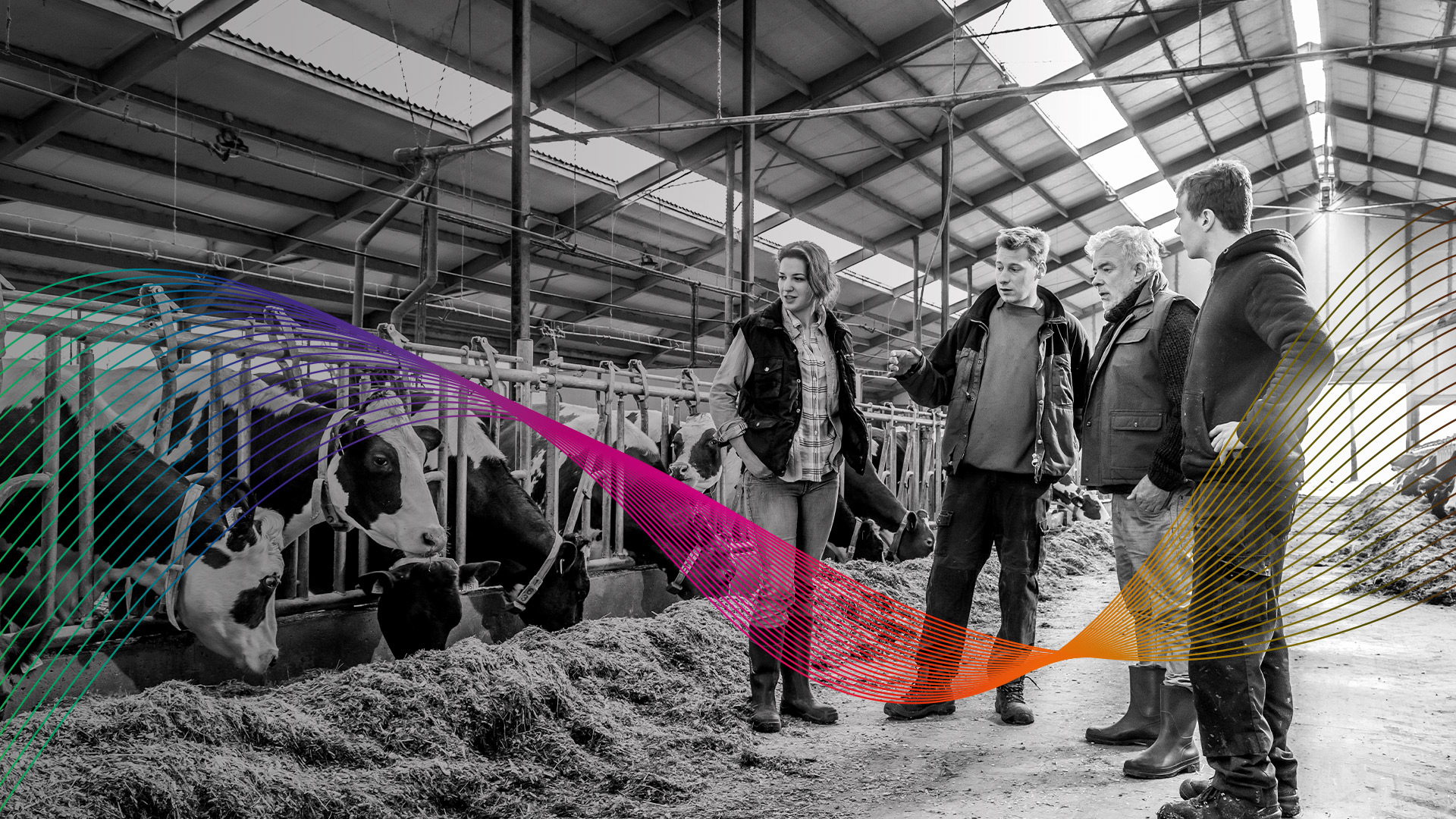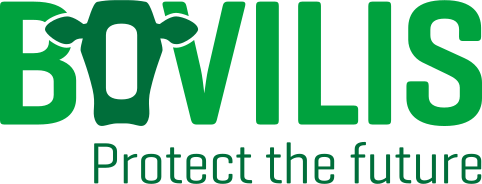

FAQs: the big
questions answered
Why vaccinate my cattle?
By 2050, it is estimated that the world’s population will increase by 34% to 9.1 billion people. Global food production output must double to meet the world’s demand for food.1 Animal disease reduces global food production by 20%2 and costs farmers a significant proportion of their meat, fish, and dairy yield. Preventing disease-related costs is crucial if we are to meet the growing global demand for protein, and vaccines are the first-line defense against disease.
Vaccines benefit animals
- Animal vaccines are considered the first line of defense against diseases
- Vaccines reduce the need for treating illness3
- Less disease and illness means improved animal health and well-being
Vaccines benefit people
- Vaccines protect animals from contracting diseases that they may then transmit to humans4, 5
- Vaccines minimize the likelihood and spread of food-borne pathogens6
- Vaccines help keep food affordable. By keeping animals healthy, food can be produced using fewer resources
Vaccines benefit the environment
- Animal vaccines reduce death loss in animal herds, which means we don’t have to treat animals for illness as often and fewer resources are used or wasted7
- Healthy animals require fewer resources to raise, which reduces the environmental footprint of raising animals7
Why prevent a specific disease?
The three main reasons to start with vaccinate in your herd are to:
- increase immunity
- reduce the spread of disease
- eradicate disease
Furthermore, with the increasing global threats of antimicrobial resistance in both animals and humans, vaccines are very important tools to reduce antimicrobial use and thereby slow down the emergence and spread of antimicrobial resistance. Vaccinations can also reduce production losses associated with disease and are therefore leading to a more sustainable animal production.
The purpose of a vaccination is to develop a specific immune response against the pathogenic agent so that the clinical effects (severity of the symptoms, mortality risk) of any infection with the wild-type agent can be greatly reduced. Use of vaccination is intended as a prevention strategy against a disease. A vaccination can pursue different goals: to obtain an immune response in the vaccinated animal, which then exerts its effect in the vaccinated animal or to raise antibodies to pass on via colostrum intake from dam to offspring in order to protect the young animal against infection or the negative consequences of the infection.8
When should I vaccinate my cattle?
Vaccinations are generally undertaken when there is a real or perceived risk of infection. When the risk that a herd will get infected is high, or the infection in the herd is already established and the losses in productivity and health are financially high, or when the impact of a certain infection is very high even when the risk to get infected is moderate, then the recommendation will be to vaccinate, when safe and efficacious vaccines are available. For example, bovine viral diarrhea virus (BVDV) is prevalent in many countries and it is a disease with high economic losses, and therefore vaccination of cattle against BVD is certainly indicated. For certain diseases that are government regulations that determine vaccination protocols for farmers, such as foot-and-mouth disease and Bluetongue. For other programmes there may be national or regional industry-initiated systems that determine the vaccination protocols.
As herd size increases the risk of introduction of infection and spread within the herd increases. The larger herds usually have more animal introductions and animal contacts. Furthermore group housing and free stall systems increases contacts within animals on the farms. Therefore the risk that diseases will be introduced onto a farm and spread within a farm is increased. In these systems strategic vaccination programs have become a necessity in order to protect the animal from diseases.
In small farms there may also be a high risk of transmission of disease due to close contact between different animal age groups. In this situation, vaccination may assist a farmer in minimizing the spread and outbreak of diseases. The decision of if and when to vaccinate and against what pathogen should always be done after consultation with the herd veterinarian.8
What is immunity and herd immunity?
Immunity has been defined as ‘a condition of being able to resist a particular disease especially through preventing development of a pathogenic microorganism or by counteracting the effects of its products’, or in simpler terms it is ‘the power to resist infection whether natural (innate) or acquired (as by vaccination).9 A strong powerful immunity is therefore crucial to maintain health in our current animal production, where multiple types of pathogens are continually challenging the health, welfare and productivity of our animals. As Webster’s dictionary implies, vaccinations play a great role in optimizing the animal’s power to resist disease. Vaccination is the administration of antigenic material (a vaccine) to stimulate an individual’s immune system to develop adaptive immunity to a pathogen.
Herd immunity is a form of immunity that occurs when the vaccination of a significant portion of a population (or herd or flock) provides a measure of protection for animals that have not developed immunity. The risk of infection among susceptible animals in a population is reduced by the presence and proximity of immune animals. This concept can be explained in terms of the reproductive ratio (R), which is a measure of the transmission potential of a disease. It is the number of secondary infections produced by a typical case of an infection in a population that is totally susceptible. The basic reproductive ratio (R0) is affected by several factors: such as population density and contacts between animals, probability of transmission upon contact, duration of infectious period, etc. When R0 > 1 the infection will be able to spread in a population but when R0 < 1 the infection will die out in the long run. The effective reproductive rate (R) measures takes into account that some animals may be immune against disease through previous exposure to the pathogen or vaccination. The herd immunity threshold is the proportion of a population that need to be immune in order for an infectious disease to become stable in that community (R=1, each case of infection generates one new case of infection). If R < 1, then the infectious disease will be eliminated out of the population. For vaccines, the percentage of the population that needs to be vaccinated to protect the population can be calculated based upon the efficacy of the vaccine and the reproductive ratio. Furthermore, selective vaccination of high risk animals that are important in transmission can slow transmission in a population.8
What is a vaccine?
Vaccination is the administration of antigenic material (a vaccine) to stimulate an individual’s immune system to develop adaptive immunity to a pathogen. The vaccine contains either inactivated or attenuated forms of the pathogens, or purified highly immunogenic components of the pathogen. On a population basis, vaccinations have led to the eradication and control of many animal and zoonotic diseases. Vaccines are indispensable tools to prevent potentially dangerous infectious diseases and to maintain animal welfare and the productivity of animal production. Vaccine use within disease prevention and eradication programmes has optimized animal production, health and welfare, and contributed to a highly efficient production system.8
How do vaccines work?
Vaccines work to prime the immune system against future “attacks” by a particular disease. When a pathogen enters the body, the immune system generates antibodies to try to combat it. Some of the antibodies that are created will remain in the body. In the event of exposure to the same pathogen in the future, the antibodies will recognize it and fight it off.
Types of vaccines:
- Inactivated (killed) vaccines contain whole viruses or bacteria which have been inactivated by heat, radiation, or chemical treatment. They are usually coupled with an adjuvant that acts as a stimulant to enhance the animal’s immune response
- Live attenuated vaccines contain whole viruses or bacteria which have been weakened. They offer better stimulation of the immune response and require lower doses of the bacteria or viruses. Ideally, they should not cause any clinical signs of disease8
What is a live vaccine?
Live attenuated vaccines contain a version of the living microbe that has been attenuated (weakened) in the laboratory so that it can’t cause disease. They elicit strong cellular and antibody responses and may confer lifelong immunity with only one or two doses. Some disadvantages are: there is risk that an attenuated microbe in the vaccine could revert to a virulent form and cause disease, immune-suppressed animals may become sick and they are most sensitive to cold-chain failure. Live vaccines developed and produced by trustworthy companies are nowadays as safe as inactivated vaccines. Live, attenuated vaccines are relatively easy to create for certain viruses, whereas more difficult to create for bacteria. Serum free production of live vaccines reduces risk of contamination with unwished pathogens.8
What is an inactivated vaccine?
Inactivated (killed) vaccines are created by killing the disease-causing microbe with chemicals, heat, or radiation and these vaccines are more stable than live vaccines, and may not require refrigeration. Most inactivated vaccines stimulate a weaker immune response than live vaccines, and may therefore require a two dose primary course as well as more booster vaccinations. Killed vaccines usually contain adjuvants (see 3.7), which is a substance that enhances the immunological effect to stimulate a greater immune response (and therefore protective effect) to the vaccine.8
How do I know the vaccine is safe?
Prior to licensure, field safety studies are conducted to detect unexpected reactions. These studies are used to prove that vaccines are safe for commercial use. However, even a safe vaccine may still occasionally be associated with an adverse event. Fortunately these are usually infrequent; however, post-licensure monitoring of adverse events is very important to make certain that the occurrence of these events continues to be uncommon. Adverse events are comprised of more than adverse reactions. Lack of efficacy and problems with the product formulation are also considered adverse events.8
How do I know the vaccine is effective?
Vaccine efficacy must be tested in real world conditions – or as close as possible. There are two general types of efficacy studies: serological testing and live animal challenge studies. With serological testing, the vaccine efficacy may be evaluated by measuring the antibody ti-ter produced in animals after vaccination. Titer testing looks at the ability of the serum antibodies to inactivate live viruses in cell culture – this is referred to as serum neutralization (SN) or virus neutralization (VN). Titer testing can be useful, but generally the challenge study is the most compelling and accepted means of evaluating vaccine efficacy.
Challenge studies are usually conducted with research animals in a controlled environment. Animals in these studies are typically vaccinated with the product being tested, then “challenged” with the actual disease weeks – or years – later. A control group of non-vaccinates is also challenged to determine whether the results were due to the vaccine – and what would happen to an unvaccinated animal challenged in the same way.
Vaccine duration of immunity (DOI) has become very important in recent years. In the past, most vaccines only had challenge data conducted a few weeks following vaccine administration. Yet they were still able to state “revaccinate annually” on the label. This changed in the mid 90’s to a requirement that vaccines must demonstrate a duration of immunity identical to the interval stated on the label. DOI has now become very important for vaccines.8
Can a vaccine fail to work?
Much of the failure of vaccination may be found in incorrect diagnosis of the health challenge, vaccine handling, administration and timing of administration, failure of stressed animals to mount a good immunity following vaccination, the multifactorial nature of infectious diseases, and the increased susceptibility of stressed animals to disease.
Therefore in order to have a successful vaccination program it is essential to consider all the aspects of health and immunity as described previously. It is highly likely that the competence of the individual animal owner is sufficient to evaluate all factors necessary for a successful program, and therefore the herd veterinarian becomes a vital person to develop the herd vaccination scheme within the scope of a holistic herd health program.8
How to store a vaccine?
It is very important that vaccines are kept at the indicated temperature, but unfortunately vaccines are too often subjected to temperature abuse, either too high temperatures or too low and even freezing temperatures, compromising the vaccine potency. A field study performed by Paul Williams, veterinary advisor MSD, indicated that farm refrigerator temperatures where vaccines were stored were frequently outside the correct temperature range for vaccines (between 2-8 °C).10 Paul Williams concluded that there is a need to raise farmers’ awareness for correct vaccine storage temperatures. In order to minimize the risks of temperature abuse on farms, the vaccines should be stored on farm for a minimum amount of time in refrigerators with temperature controls.8
Will feeding colostrum prevent a vaccine to work if administered in the first weeks of life?
Neonatal ruminants are highly dependent on passive transfer of immunity from the dam through colostrum. Colostrum is the first source of liquid, energy, nutrients, vitamins, immunoglobulins and various bioactive substances that the calf will ingest.11 The effect of the various components of colostrum on health and growth cannot always be separated from each other and they should be kept in mind, even when evaluation of colostrum feeding in calves/lambs mostly is a measure of passive transfer of immunity in the form of immunoglobulins. The maternal antibodies protect the calf against pathogens and disease during the time that the young ruminants own immune system is evolving.
For example, in the second week of life of calves, the neonatal animal is suffering from low levels of immunoglobulins due to waning levels of colostral antibodies and insufficient production and development of its own immunity.12 However, colostral passive transfer of immunity has a big impact of calves for a very long period.
If animals are vaccinated in the presence of high levels of maternal antibody to that antigen, they may not display increased antibody titres after vaccination. However, attenuated vaccines and some inactivated vaccines using adjuvants that stimulate cell-mediated protective mechanism can elicit the formation of B-cell memory responses and cell-mediated immune responses in the face of maternal antibody.13,14 Furthermore, there are some intranasal vaccines that stimulate the mucosal associated lymphoid tissue (MALT) that also are effective in the presence of colostral-derived immunity.15

Taking you closer to a solution
Protecting the future begins early, with the right vaccines and treatments to ensure health and vitality in your herd. Bovilis® products ensure confidence in your herd today and in the future by offering high quality products and combinations based on your specific need.
Go to your country website
References:
- Food and Agriculture Organization
How to Feed the World in 2050. http://www.fao.orgffileadmin/templates/wsfs/docs/expert_paper/How_to_Feed_the_World_in_2050.pdf - Vallat,B.
Vallat,B., Director General of the World Organization for Animal Health (OIE), editorial, 30 April 2009. http://www.oie.int/for-the-media/editorials/detail/article/one-world-one-health/ - Rose, N. and Andraud, M.
The use of vaccines to control pathogen spread in pig populations. Porcine Health Management. 2017. 3:8 DOI. 10.1186/s40813-017-0053- https://porcinehealthmanagement. biomedcentral.com/articles/10.1186/s40813-017-0053-6. Accessed August 3, 2017. - Farrington, C. P.
On vaccine ef cacy and reproduction numbers. Math Biosci. 2003. 185:89-109. http://izt.ciens.ucv.ve/ecologia/Archivos/ECOLOGIA_DE%20_POBLACIONES_Hasta%202004/ECOL_POBLAC_Hasta%202004_(A-G)/Farrington%202003.pdf. Accessed August 3, 2017. - Roth, J. A.
Veterinary Vaccines and Their Importance to Animal Health and Public Health. Procedia in Vaccinology. 2011. 5:127-136. http://ac.els-cdn.com/S1877282X11000270/1-s2.0-S1877282X11000270-main.pdf?_tid=b9d9e840-9803-11e7-ace0-00000aacb35e&acdnat=1505252922_65fef46b434fb96a9017e386b906543b. Accessed August 3, 2017. - USDA
USDA Animal and Plant Health Inspection Service. Veterinary Services. Centers for Epidemiology and Animal Health. Vaccination of Cattle and Calves on U.S. Beef Cow-calf Operations.https://www.aphis.usda.gov/animal_health/nahms/beefcowcalf/downloads/beef0708/Beef0708_is_GenVacc.pdf - American Meat Institute
American Meat Institute. The Facts About Antibiotics in Livestock & Poultry Production. Sort fact from fiction. https://www.meatinstitute.org/index.php?ht=a/GetDocument Action/i/99943. Accessed August 15, 2017.
- Berge, A. C., Vertenten, G.
Berge, A. C., Vertenten, G., The importance of preventive health and vaccination programs in ruminant production, June 2017, MSD Animal health. - Merriam Webster. 2017.
Definition of immunity, https://www.merriam-webster.com/dictionary/immunity. - Wiliams, P., and G. Paixao. 2016
There is a need to raise farmers’ awareness of correct vaccine storage temperatures. Pages 167 in World Buiatrics Congress. - McGrath, B. A., P. F. Fox, P. L. McSweeney, and A. L. Kelly. 2016.
McGrath, B. A., P. F. Fox, P. L. McSweeney, and A. L. Kelly. 2016. Composition and properties of bovine colostrum: a review. Dairy Sci Technol 96:133-158. - Hulbert, L. E., and S. J. Moisa. 2016.
Hulbert, L. E., and S. J. Moisa. 2016. Stress, immunity, and the management of calves.J. Dairy Sci. 99(4):3199-3216. - Cortese, V. S. 2009.
Cortese, V. S. 2009. Neonatal immunology. Vet. Clin. North Am. Food Anim Pract. 25(1): 221-227. - Ellis, J. A., S. P. Gow, S. Mahan, and R. Leyh. 2013.
Ellis, J. A., S. P. Gow, S. Mahan, and R. Leyh. 2013. Duration of immunity to experimental infection with bovine respiratory syncytial virus following intranasal vaccination of young passively immune calves. J. Am. Vet. Med. Assoc. 243(11):1602-1608. - Nuijten, P., van Rooij, M., Vertenten, G.
Nuijten, P., van Rooij, M., Vertenten, G., A new intranasal BRD vaccine induces protection in the presence of maternally derived antibodies, Publication at World Buiatrics Congress 2022.


